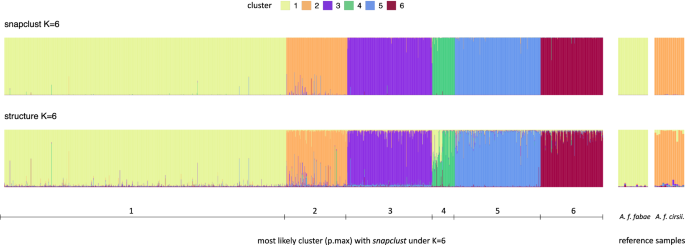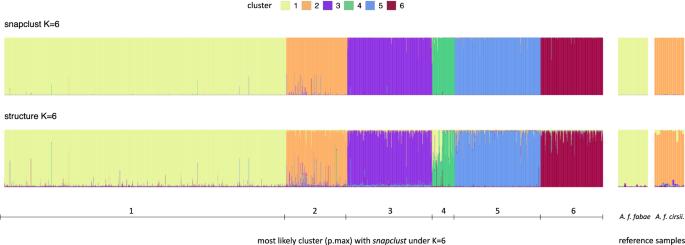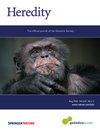尽管有共同的交配场所,但仍存在生态差异:基因型和共生型揭示了黑豆蚜种群的隐秘多样性。
IF 3.9
2区 生物学
Q2 ECOLOGY
引用次数: 0
摘要
对于植食性昆虫来说,不同的寄主植物代表着不同的生态环境。如果以不同植物为食的种群之间的基因流动减少,那么由此产生的分化选择可以促进专门寄主种族的进化。在属于蚜虫复合体的黑豆蚜虫中,已经根据其对不同寄主植物的偏好描述了几个形态上隐蔽的类群。然而,这些昆虫的寄主选择和配偶选择在很大程度上是分离的:它们具有寄主交替性,在特定的夏季寄主植物和共同的冬季寄主之间迁移,并在共同的寄主上交配。这为使用不同夏季寄主的蚜虫提供了每年一次的基因流动机会,同时也提出了一个问题,即生态学上定义的类群是否以及在多大程度上存在生殖隔离。在这里,我们分析了一个具有地理和时间结构的蚜虫微卫星基因型数据集,这些数据主要是从主要的冬季寄主欧洲鹅掌楸以及另一个冬季寄主和 14 个夏季寄主采集的。这些数据揭示了多个强烈分化的基因群,它们与不同的夏季和冬季寄主的关系各不相同。这些基因群在感染两种可遗传的兼性内共生体的频率上也有所不同,这分别暗示了生殖隔离和不同的生态选择。此外,我们还发现了基因簇间偶尔杂交的证据,春季采集到的假定杂交种比秋季更频繁。这表明,与其他植食性昆虫的寄主种族类似,尽管有共同的交配生境,但婚前和婚后的障碍(包括对杂交种的选择)维持了A. fabae类群之间的遗传分化。本文章由计算机程序翻译,如有差异,请以英文原文为准。


Ecological divergence despite common mating sites: Genotypes and symbiotypes shed light on cryptic diversity in the black bean aphid species complex
Different host plants represent ecologically dissimilar environments for phytophagous insects. The resulting divergent selection can promote the evolution of specialized host races, provided that gene flow is reduced between populations feeding on different plants. In black bean aphids belonging to the Aphis fabae complex, several morphologically cryptic taxa have been described based on their distinct host plant preferences. However, host choice and mate choice are largely decoupled in these insects: they are host-alternating and migrate between specific summer host plants and shared winter hosts, with mating occurring on the shared hosts. This provides a yearly opportunity for gene flow among aphids using different summer hosts, and raises the question if and to what extent the ecologically defined taxa are reproductively isolated. Here, we analyzed a geographically and temporally structured dataset of microsatellite genotypes from A. fabae that were mostly collected from their main winter host Euonymus europaeus, and additionally from another winter host and fourteen summer hosts. The data reveals multiple, strongly differentiated genetic clusters, which differ in their association with different summer and winter hosts. The clusters also differ in the frequency of infection with two heritable, facultative endosymbionts, separately hinting at reproductive isolation and divergent ecological selection. Furthermore, we found evidence for occasional hybridization among genetic clusters, with putative hybrids collected more frequently in spring than in autumn. This suggests that similar to host races in other phytophagous insects, both prezygotic and postzygotic barriers including selection against hybrids maintain genetic differentiation among A. fabae taxa, despite a common mating habitat.
求助全文
通过发布文献求助,成功后即可免费获取论文全文。
去求助
来源期刊

Heredity
生物-进化生物学
CiteScore
7.50
自引率
2.60%
发文量
84
审稿时长
4-8 weeks
期刊介绍:
Heredity is the official journal of the Genetics Society. It covers a broad range of topics within the field of genetics and therefore papers must address conceptual or applied issues of interest to the journal''s wide readership
 求助内容:
求助内容: 应助结果提醒方式:
应助结果提醒方式:


